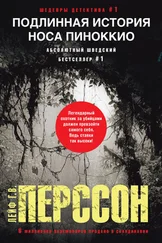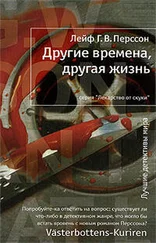Therefore the head of homicide thought he was on a solid behavioristic footing when he sent word that he had made note of the terrorists’ wishes and was willing to talk things over. But his adversaries had different, more violent ideas. After only a few minutes a volley of shots echoed from the top floor of the embassy. Then the door to the upper corridor opened and the German military attaché’s bloody, lifeless body was thrown out down the stairs, coming to rest on the halfway landing. That done, the terrorists again made contact.
The demand remained. If the police wished to retrieve the corpse, that was fine, provided that at most two police officers did so, dressed only in underwear. And if they did not wish to retrieve more dead bodies, they should leave the building immediately. What extraordinarily depressing people, the head of homicide thought as he made his first operational decision in a crisis situation. Of course the police would leave the building. Of course they would see to removing the body. Of course. It was already under way.
Then by radio he contacted the chief inspector of the central detective squad who was leading the forces inside the building and asked him for three things. First, to send a suitable, clearly visible number of men out of the building; second, to see to it that those who remained behind regrouped discreetly on the basement level; third and finally, to appoint two volunteers who were willing to play the part of EMTs in underpants only.
Assistant detective Bo Jarnebring with the central detective squad was one of the first who, with service revolver drawn, and with a warm heart and a cool head, had rushed into the embassy building, and he was also the first to volunteer. His boss had only shaken his head. Even an almost naked Jarnebring would be far too terrifying a spectacle in this sensitive initial phase. The assignment had gone instead to two of his older colleagues who had a more jovial, roly-poly appearance. Jarnebring and two other like-minded colleagues would try to provide cover for the stretcher bearers and if necessary fire their weapons toward the upper corridor.
This duty suited Jarnebring much better, and he quickly crawled up the stairs and took position. His two colleagues succeeded with some difficulty in rolling the lifeless, bloody body up onto the stretcher that they pushed ahead of them. It was not exactly simple to do lying curled up on a stairway, but it worked. After that they very carefully started to ease back down the stairs with the stretcher dragging after them while Jarnebring held the sight of his service revolver aimed steady at the door to the upper corridor. It was at approximately that moment that he acquired his lifelong memory of the German terrorists’ occupation of the West German embassy in Stockholm. There was a smell of burnt telephone.
Suddenly he glimpsed the barrel of an automatic weapon in the door opening, and just as he tried to change position to get a clear shot at the person who was holding the gun he saw the flames in the muzzle of the barrel, heard the reports boom in the narrow stairwell and the ricochets buzzing like angry hornets around his ears. But it was his nose that remembered best the smell of burnt telephone. It was not until the next day when he and a few of the others returned to the site to help clean up that he became clear about the reason for his memory. The staircase banister was covered with black Bakelite, and about eighteen inches above the place where his head had been the bullet from an automatic weapon had carved a yard-long groove in the banister.
The Swedish police lacked both the equipment and the training for this type of effort. The combined practical experience of the police force amounted, counting generously, to no more than three similar events: the murder of the Yugoslavian ambassador in Stockholm in April 1971, an airplane hijacking at Bulltofta outside Malmö in September 1972, and the so-called Norrmalmstorg drama in Stockholm in August 1973. That was when an ordinary Swedish thief had taken the personnel of a bank hostage in an effort to force the release from prison of the bank robber most lionized by the national mass media. Both the airplane hijacking and the Norrmalmstorg drama had ended happily in the sense that no one had died, but in this new case other rules clearly applied; only an hour after the situation had begun the head of the homicide squad had a corpse around his neck and this he greatly disliked.
He therefore decided to change tactics and lie low, very low, as low as possible, if for no other reason than to give the Stockholm syndrome a second chance to have its full effect. Deep down, because he himself was a good person, he had a hard time letting go of that thought. As afternoon changed to evening he had therefore allowed his forces to conduct the police variation of the Swedish hedgehog, and he had mostly talked on the phone. With his own police command, with people from the National Police Board, representatives of the government and the Ministry of Justice, basically with anyone and everyone who managed to get in touch with him.
Late in the afternoon two colleagues from the German secret police showed up at his temporary command center. After a brief description of the situation they left him to form their own impressions. Only a quarter of an hour later an out of breath chief inspector from the uniformed police came to report that the “German bastards” were going around doling out high-caliber American army revolvers as a gift to their Swedish colleagues. So that they would have “more substantial hardware to hold on to than a lousy Walther pistol when things got serious.” The head of homicide sighed and told the chief inspector to break off these “philanthropic activities” as quickly as possible and take care to see that any gifts already doled out were rounded up.
“Otherwise the boys from tech will go crazy on us,” he added both judiciously and pedagogically. For regardless of how things went with those inside, there would be a forensic investigation at the crime scene at some point, and much of that would involve attributing discharged bullets to the right weapon. This he knew better than almost anyone else, because he had devoted more than twenty years of his career to investigating serious crimes of violence.
The opponents inside the embassy had not in any event expressed any active dissatisfaction with the police command’s new tactical arrangements. They had their hands full with monitoring the situation at the same time as negotiations went on with their own government and the Swedish government about the demands that had been made: immediate release of twenty-six comrades from German prisons, among them the leaders of the Baader-Meinhof group. Transport by air to a friendly host country plus twenty thousand dollars on top of that for each and every one of those released. If their demands were not met, they would start shooting hostages, one each hour starting at ten o’clock that evening. It was as simple as that.
There followed hours of waiting without anything in particular happening while the clock ticked on toward ten. It was decided, for lack of anything better to do, to hasten the preparations for the tear gas attack that had been under consideration for the past few hours.
The time had reached quarter past ten before the final word from the German government in Bonn — via the Swedish government in Stockholm — reached the terrorists at the embassy. Only a few minutes later someone inside must have got tired, went and fetched the embassy’s trade attaché, led him up to a window, and shot him from behind.
One of the police detectives, well situated in a so-called nest at a neighboring embassy, saw the trade attaché being murdered, and when he reported his observations — “I think they shot him in the back or the neck” — the head of the homicide squad suddenly lost heart. The promised effects of the Stockholm syndrome, this good, consoling cigar, seemed more remote than ever. It had been less than ten hours and already two of the hostages had been murdered.
Читать дальше












